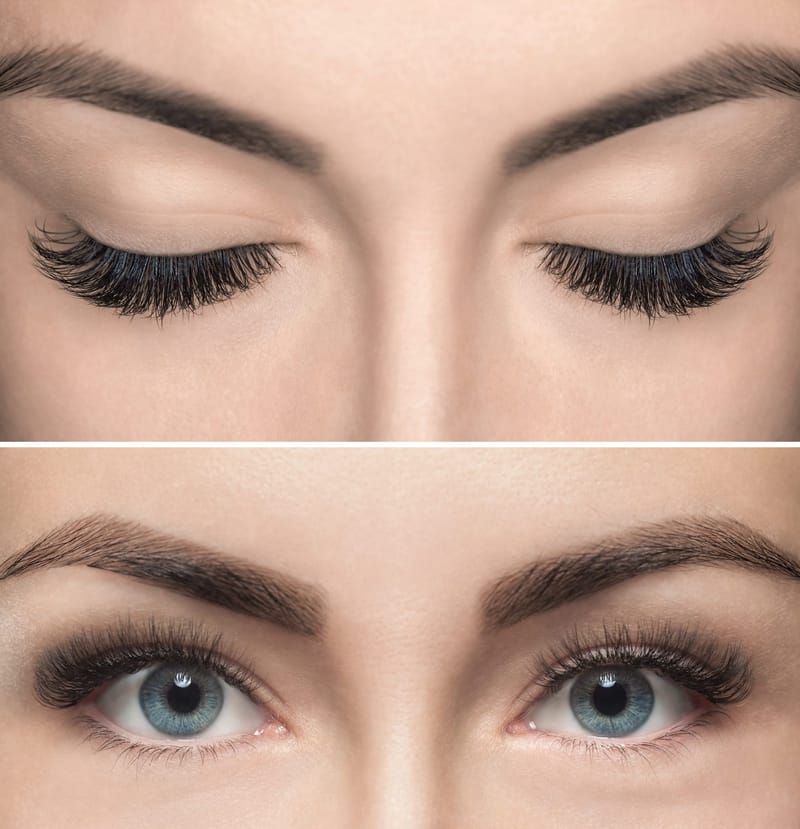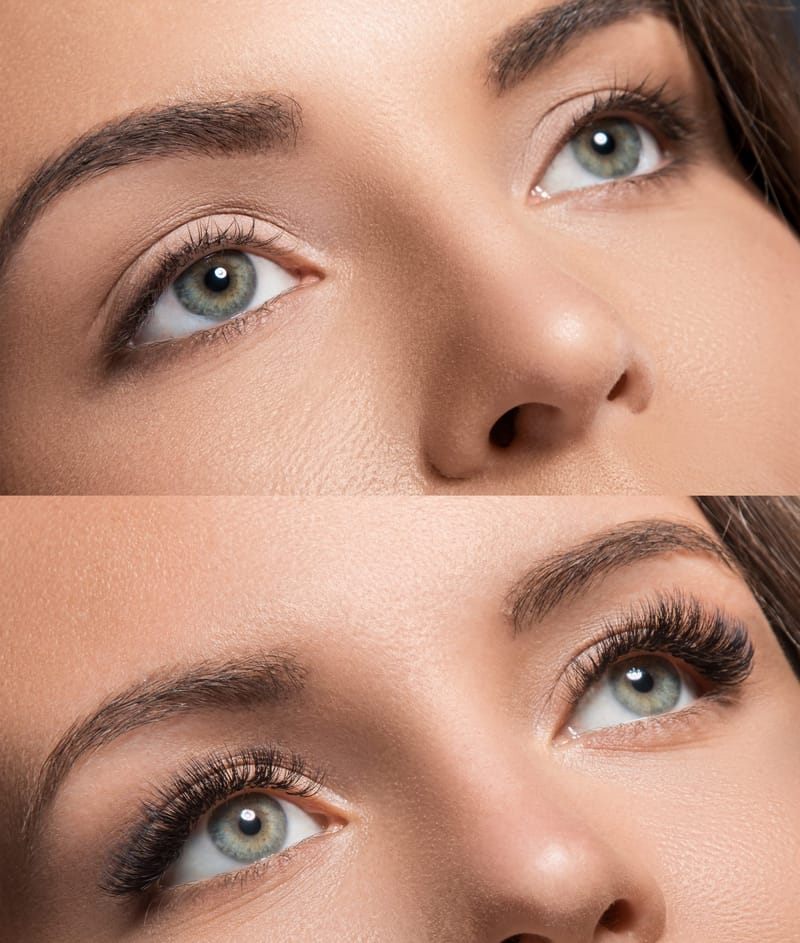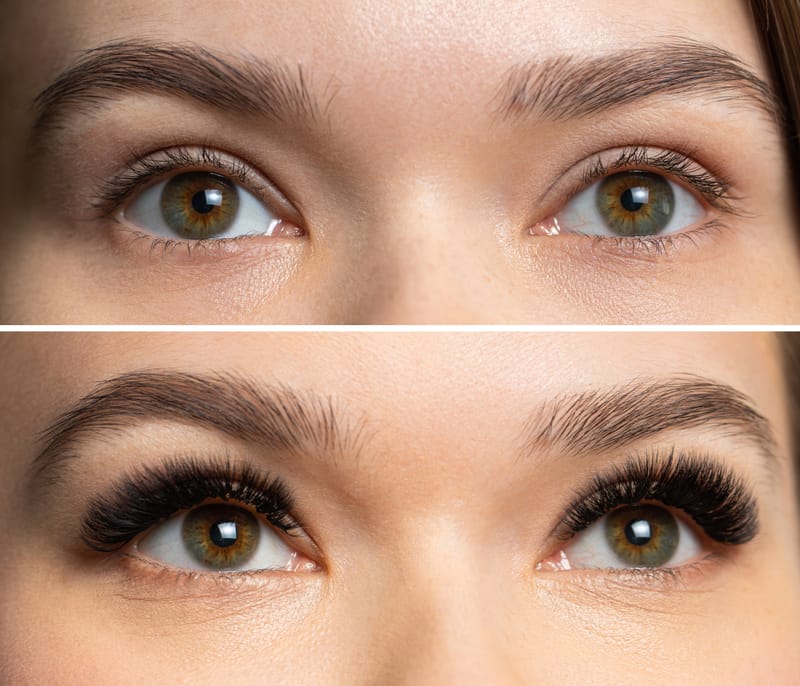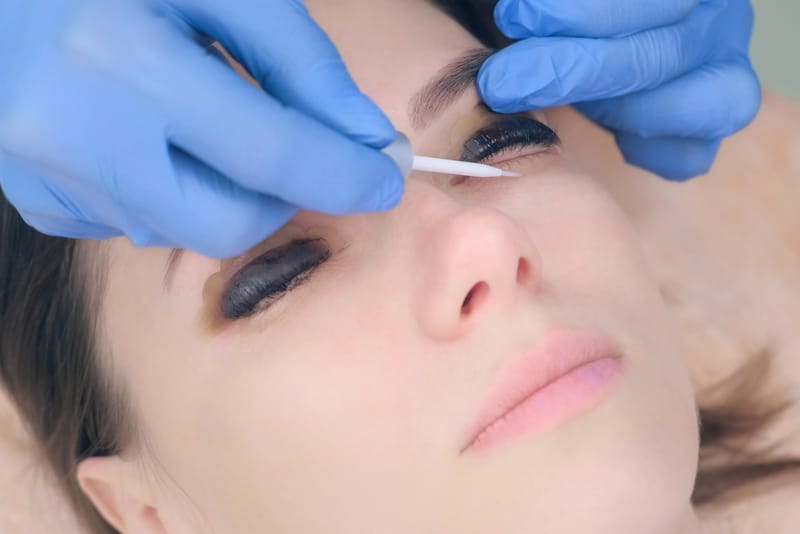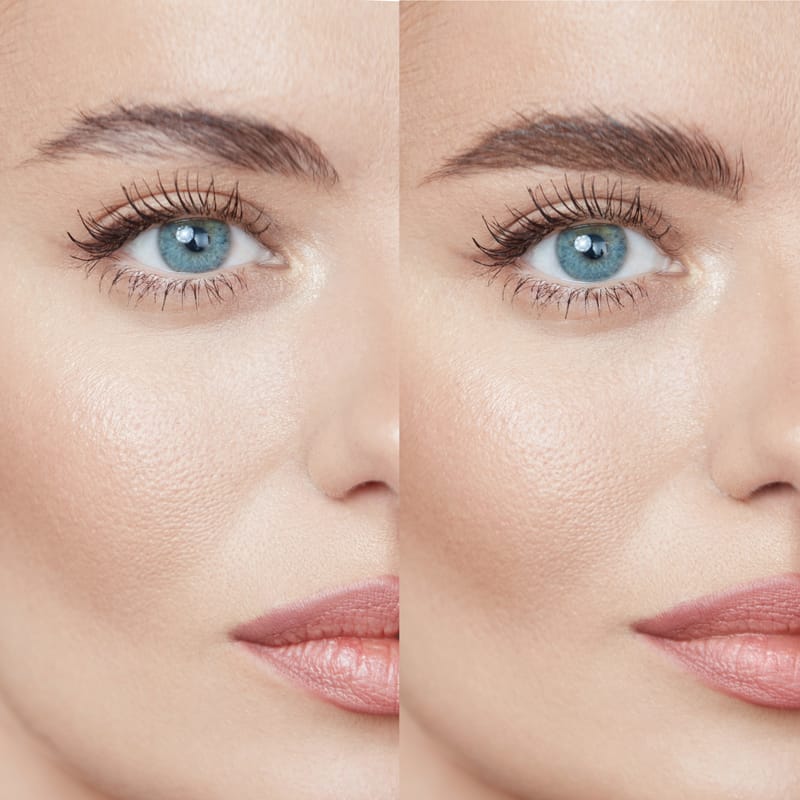Welcome to Lash & Eye Studio
Where Beauty Meets Elegance
Our Services
First Service
A Special Pricing For The First Visitor Service
$70
Classic Full Set
- 1:1 Application: The defining characteristic is the one-to-one ratio – one extension adhered to one natural lash
- Original Price $100
$110
Hybrid Full Set
MOST POPULAR
- Enhanced Fullness: You'll notice a significant increase in fullness compared to a classic set, making your lash line appear denser and more impactful.
- Original Price: $135
$145
Volume Full Set
- Maximum Fullness: this is the primary goal. Volume sets create a dramatically fuller and denser lash line, making your eyes appear more striking and defined
- Original Price: $165
$70
Basic Facial
- A basic facial is a great starting point for anyone looking to improve their skin's health and appearance. It's a relatively quick and non-invasive treatment that can leave your skin feeling refreshed and revitalized. Regular facials, combined with a consistent home skincare routine, can contribute to long-term skin health.
- Original Price: $99
$115
Advanced Facial
- An advanced facial service takes skincare a step beyond the basic maintenance and relaxation of a standard facial. These treatments incorporate more potent ingredients, specialized techniques, and often utilize advanced technologies to target specific skin concerns with greater intensity and achieve more significant results
- Original Price $150
$150
Signature Facial
- A signature facial service is a unique and often more comprehensive treatment offered by a spa or esthetician, designed to be a standout experience that showcases their expertise and the quality of their products. It's more than just a basic or even a standard advanced facial; it's a carefully curated journey for the skin, often incorporating a blend of techniques, specialized products, and luxurious touches to deliver exceptional results and a memorable experience
- Original Price: $200
Team
Connect with a Beauty Stylist Who Cares About Your Look!
Jonny Pham
Specialized Esthetician
Areli Gonzalez
Beauty Consultant
Rose Chu
Master Stylist
Jojo Dang
Beauty Instructor
Mina Thieu
Beauty Stylist
Julie Vo
Beauty Stylist
Our Beauty Team and Models
Your Beauty Goals, Our Team's Passion
Testimonials
" HAPPY MOTHER DAY!"
Last Chance for the Perfect Mother's Day Gift!
Last Chance for the Perfect Mother's Day Gift!
For a limited time, enjoy a 10% discount on all gift cards
F.A.Q
How long should I wait to get my new eyelash extensions wet?
Please avoid getting your eyelash extensions wet for the first 24-48 hours after application. This crucial period allows the adhesive to fully cure and form a strong bond. Exposure to water or steam during this time can weaken the bond and cause premature shedding.
What should I avoid in the first 48 hours?
Beyond water, you should also avoid:
- Excessive heat and steam: This includes saunas, steam rooms, and very hot showers.
- Sweating: Avoid intense workouts or activities that cause heavy sweating.
- Touching or rubbing your eyes: This can transfer oils and disrupt the adhesive bond.
- Sleeping on your face: This can cause your extensions to bend or fall out.
How should I cleanse my face with eyelash extensions?
Gently cleanse around your eyes using a mild, oil-free cleanser. Avoid getting cleanser directly on your extensions. You can use a damp cotton swab or a specialized lash cleansing brush to carefully clean along your lash line. Rinse with cool water, avoiding direct spray on your lashes. Pat your face dry, and then gently blot your lashes dry with a lint-free towel or allow them to air dry.
Can I use makeup with eyelash extensions?
Yes, but be mindful of the products you use. Avoid oil-based mascaras, eyeliners, and makeup removers, as these can break down the adhesive. Opt for water-based or extension-safe formulas. When applying eyeliner, avoid getting it directly on the base of your lashes.
How should I remove eye makeup with extensions?
Use an oil-free makeup remover specifically designed for eyelash extensions or a gentle, water-based remover. Apply the remover to a lint-free cotton pad or a cleansing brush and gently swipe downwards, avoiding excessive rubbing. Never pull or tug at your extensions.
Can I use mascara on my eyelash extensions?
It's generally not recommended to use mascara on your eyelash extensions, especially oil-based formulas. Mascara can clump your extensions together, make them difficult to clean, and potentially shorten their lifespan. If you feel you need mascara, use a water-based formula specifically designed for extensions sparingly on the tips only.
How often should I brush my eyelash extensions?
Gently brush your extensions daily using a clean, dry spoolie brush. This helps to keep them neat, prevent tangling, and remove any dust or debris. Brush from the mid-shaft to the tips of your lashes.
What should I avoid doing with my eyelash extensions?
Please avoid:
- Rubbing or pulling at your extensions.
- Picking at your extensions.
- Using mechanical lash curlers.
- Sleeping directly on your face.
- Excessive exposure to heat and steam.
- Using oil-based products around your eyes.
- Applying regular mascara (especially oil-based).
How long do eyelash extensions typically last?
Eyelash extensions typically last for the natural growth cycle of your own eyelashes, which is usually around 6-8 weeks. However, with proper aftercare and regular fills (usually every 2-3 weeks), you can maintain a full and beautiful look indefinitely.
When should I schedule a fill appointment?
Most clients benefit from fill appointments every 2-3 weeks to replace any lashes that have naturally shed. Waiting longer may result in significant loss of extensions and a higher cost for the fill.
What should I do if I experience any irritation or discomfort?
If you experience any redness, swelling, itching, or discomfort, please contact us immediately. Do not try to remove the extensions yourself, as this can damage your natural lashes.
Can I go swimming or use a hot tub with eyelash extensions?
While occasional exposure to water is generally fine after the initial 48-hour curing period, frequent or prolonged exposure to chlorinated water, saltwater, and steam from hot tubs can weaken the adhesive bond and shorten the lifespan of your extensions. It's best to limit exposure and gently rinse your lashes with fresh water afterward.
My eyes feel a little sensitive right after the application. Is this normal?
Some mild sensitivity or slight redness immediately after the application is normal and usually subsides within a few hours. This can be due to the eye pads or the adhesive fumes. However, if you experience significant pain, swelling, or persistent redness, please contact us immediately.
Can I use liquid eyeliner with my extensions?
Be cautious with liquid eyeliners, especially those with a felt tip or brush applicator, as they can sometimes snag on the extensions. Opt for a gel or powder eyeliner applied gently along your upper lash line, avoiding the base of the extensions. When removing, use an oil-free remover and a fine-tipped cotton swab to carefully trace the lash line.
I love to get facials. Are there any precautions I should take?
Inform your esthetician that you have eyelash extensions. They should avoid using oil-based products around your eyes and be gentle during any facial massage in that area. You may want to gently cover your eyes with a tissue during steaming.
Can I go tanning with eyelash extensions?
The heat from tanning beds can potentially weaken the adhesive bond over time. It's best to wear protective eyewear and try to avoid direct, prolonged heat exposure to your lashes.
Why do some of my extensions twist or flip?
This can happen as your natural lashes grow out. The extension, attached to your natural lash, will move with its growth, sometimes causing it to twist. Regular brushing can help minimize this. During your fill appointment, your technician will remove any outgrown or twisted extensions and apply new ones.
One of my extensions is poking me. What should I do?
Please do not try to pull it out yourself. This could damage your natural lash. Contact us as soon as possible, and we can safely remove or adjust the extension for you.
I think I'm having an allergic reaction. What are the signs, and what should I do?
Signs of an allergic reaction can include significant redness, swelling, itching, burning, or excessive tearing. If you experience any of these symptoms, please contact us immediately. We will need to safely remove the extensions. Do not try to remove them yourself.
How to clean Lash Extensions with Lash Shampoo?
Steps for Using Lash Shampoo:
- Wash Your Hands: Always start with clean hands to prevent the transfer of bacteria to your eyes.
- Wet Your Lashes (Optional): Some people prefer to lightly dampen their lashes with water before applying the shampoo. This can help to loosen any debris. You can splash a little water on your closed eyelids or use a damp lint-free cloth.
- Apply the Lash Shampoo:
- Dispense a small amount (usually 1-2 pumps or a pea-sized amount) of the lash shampoo onto the back of your clean hand or directly onto the damp cleansing brush.
- Dispense a small amount (usually 1-2 pumps or a pea-sized amount) of the lash shampoo onto the back of your clean hand or directly onto the damp cleansing brush.
- Cleanse Your Lashes and Lash Line:
- Gently close your eyes.
- Using the cleansing brush, carefully work the shampoo into your lash line and through your extensions. Use gentle, downward strokes, and small circular motions along the lash line where makeup, oil, and debris tend to accumulate.
- Be sure to get in between the lashes and right at the base where the extensions are attached. This is crucial for removing buildup.
- Cleanse for about 15-30 seconds per eye.
- Rinse Thoroughly:
- Rinse your lashes and eyelids thoroughly with lukewarm water. You can do this by:
- Gently splashing water over your closed eyes.
- Using a rinse bottle to carefully direct water along your lash line, ensuring all traces of the shampoo are removed. Tilt your head to the side to allow the water to run off.
- It's important to rinse completely, as any leftover shampoo residue can cause irritation or affect the adhesive bond.
- Rinse your lashes and eyelids thoroughly with lukewarm water. You can do this by:
- Gently Dry Your Lashes:
- Pat your lashes dry with a clean, lint-free cloth or tissue. Avoid rubbing or pulling.
- You can also use a cool setting on a hairdryer held at a distance to gently blow-dry your lashes.
- Brush Your Lashes:
- Once your lashes are dry, use a clean spoolie brush to gently brush them. This will help to separate the extensions and fluff them back into their proper shape. Brush from the base of your natural lashes upwards through the tips of the extensions.
Do eyelashes have a life cycle?
The life cycle of a natural eyelash has three main phases:
Eyelash extensions are glued to your individual natural eyelashes. Because your natural lashes are always in different stages of this cycle, it's normal for some extensions to fall out along with your natural lashes as they reach the end of their Telogen phase and shed.
The typical lifespan of eyelash extensions is about 6 to 8 weeks, which roughly aligns with the entire natural lash cycle. However, to maintain a full look, fills are recommended every 2-3 weeks to replace the extensions that have shed with your natural lashes that have completed their cycle.
Understanding the natural lash cycle helps to manage expectations about eyelash extension retention and the need for regular maintenance.
- Anagen (Growth Phase): This is when the lash is actively growing, and it typically lasts for 30-45 days. About 40% of your upper lashes are in this phase at any given time. Eyelash extensions applied to lashes in this phase tend to have the best retention as they will grow out with the natural lash.
- Catagen (Transition Phase): In this phase, the lash reaches its full length, and the hair follicle starts to shrink. The lash stops growing and detaches from the blood supply. This phase lasts for about 2-3 weeks.
- Telogen (Resting/Shedding Phase): This is the final phase, lasting around 3-4 months. During this time, the lash is fully grown but is resting in the follicle. A new lash begins to grow beneath it, eventually pushing the old lash out. It's normal for a few lashes to shed naturally during this phase.
Eyelash extensions are glued to your individual natural eyelashes. Because your natural lashes are always in different stages of this cycle, it's normal for some extensions to fall out along with your natural lashes as they reach the end of their Telogen phase and shed.
The typical lifespan of eyelash extensions is about 6 to 8 weeks, which roughly aligns with the entire natural lash cycle. However, to maintain a full look, fills are recommended every 2-3 weeks to replace the extensions that have shed with your natural lashes that have completed their cycle.
Understanding the natural lash cycle helps to manage expectations about eyelash extension retention and the need for regular maintenance.
Contact US
- 1444 Blalock Rd
- Suite E
- +1-346-204-4234
- lashandeyestudio@gmail.com
- Mon-Sat- 09AM - 7PM
Call to Action: * Book Your Appointment * Schedule a Consultation * See Our Lash Styles
About Us
- Welcome to Lash And Eye Studio, where beauty meets tranquility. With a team of highly skilled professionals and a serene environment, we offer top-notch beauty services designed to enhance your natural beauty. Step into our studio and leave feeling refreshed, rejuvenated and absolutely beautiful. Your beauty is our mission.
- Located in one of the most populous cities in the United States in Houston, Texas. Lash & Eye Studio was founded in 2017 by "A Beauty Professional Team" with the company's vision to enhance the beauty and confidence of women with the best understanding of services and products. Know our Products, Beauty Services and Training.
- We take pride in our profession to serve our customers with A+ quality every day. We are passionate about beauty, our studio offers a variety of services such as eyelash extensions, facials, waxing and eyebrow art. With over ten years of experience in the industry, we want to bring you the best quality and experience when you choose our products and services.
- We believe in the power of creativity, the power of teamwork and work-life balance; together we will learn, grow and continue to provide the best performance and superior quality products so that each Lash And Eye Studio customer will be loyal to the brand with the most memorable experience.
- Located in one of the most populous cities in the United States in Houston, Texas. Lash & Eye Studio was founded in 2017 by "A Beauty Professional Team" with the company's vision to enhance the beauty and confidence of women with the best understanding of services and products. Know our Products, Beauty Services and Training.
- We take pride in our profession to serve our customers with A+ quality every day. We are passionate about beauty, our studio offers a variety of services such as eyelash extensions, facials, waxing and eyebrow art. With over ten years of experience in the industry, we want to bring you the best quality and experience when you choose our products and services.
- We believe in the power of creativity, the power of teamwork and work-life balance; together we will learn, grow and continue to provide the best performance and superior quality products so that each Lash And Eye Studio customer will be loyal to the brand with the most memorable experience.
